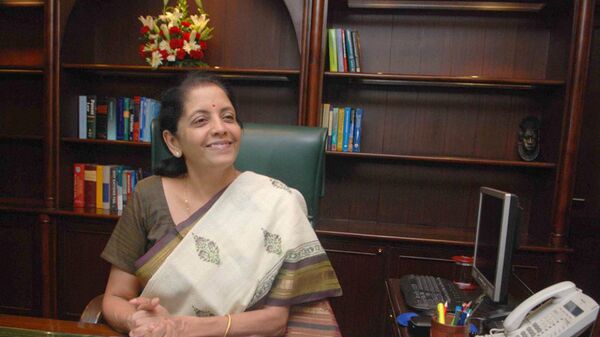Indian Finance Minister Nirmala Sitharaman recently expressed a very optimistic economic growth outlook in the current financial year, despite the ravaging impact of the Covid-19 pandemic.
She claimed India's economic growth will remain almost flat in the current financial year (April 2020 - March 2021).
Addressing the India Energy Forum, Sitharaman had said that the country was likely to witness a negative or near zero percent economic growth in the course of the ongoing financial year ending on 31 March 2021.
With this, the minister made a contrarian projection at a time global brokerages and observers have predicted a massive shrinkage of the Indian economy as a result of the pandemic.
For the record, the Indian economy nose-dived in the April – June period of the year, which coincided with the stringent lockdown imposed with effect from 25 March to curb the contagion.
For the trimester, India’s Gross Domestic Product (GDP) contracted 23.9 percent compared with the same period in 2019. In January- March this year, the country witnessed a GDP growth of 3.1 percent.
The minister’s recent claim comes within weeks of India’s apex bank Reserve Bank of India's (RBI) forecast of a 9.5 percent contraction in the country’s economy for the current financial year.
On 9 October, while making the announcement regarding monetary policy, RBI governor Shaktikanta Das even said the risk to GDP is “tilted to the downside”.
Maintaining that the finance minister is indeed putting a brave face amid the pandemic, experts opine that near zero percent growth in the current year is not possible in any manner and point out that a deep contraction cannot be ruled out.
Economist Sunil Sinha, director of public finance at India Ratings – a Fitch Group Company – told Sputnik, “Covering economic contraction of 23.9 percent in April – June clearly would mean turning around the economy with equally strong growth in the last two quarters of the financial year.”
Sinha, however, points out that it won’t be possible, as the high frequency macro-economic indicators for the second quarter (July – September) of the current financial year reveal that economic activity is less than that of the pre-Covid level.
“Civil aviation, hospitality, tourism are badly affected. There is not so much growth in the other sectors that will neutralise the impact in these sectors. So, where will growth come from?”, Sinha asks.
He adds that economic growth in the third quarter (October – December) and the fourth quarter (January – March) will also remain in the negative zone.
Dharmakirti Joshi, the chief economist at Crisil Ltd., agrees with this assessment, saying, “Our forecast is that India will witness a 9 percent contraction in economy in the current financial year.”
“For the second quarter (July – September), the contraction is likely to be to the tune of 12 percent,” Joshi told Sputnik.
In the opinion of other global agencies, too, India will face a deep economic contraction this year.
The World Bank has projected that India’s GDP is likely to contract by 9.6 percent due to the “national lockdown and pandemic shock.”
Earlier this month, the International Monetary Fund also said that the Indian economy is set to contract 10.3%. This is a steep revision of its June forecast of a 4.5% contraction.
Goldman Sachs too maintains that the Indian economy will witness a 14.8 percent contraction, while India Ratings has maintained that the country will see an 11.8 percent contraction in its GDP.



